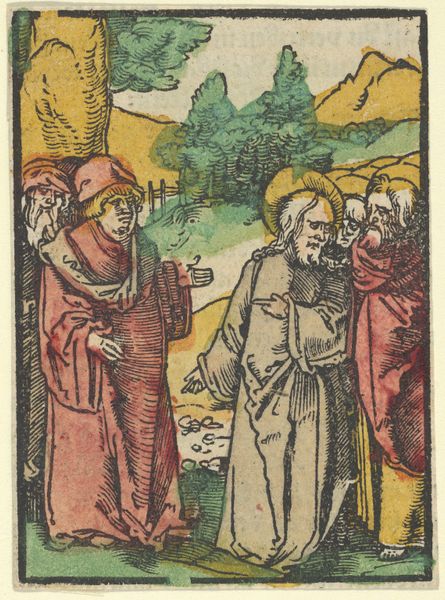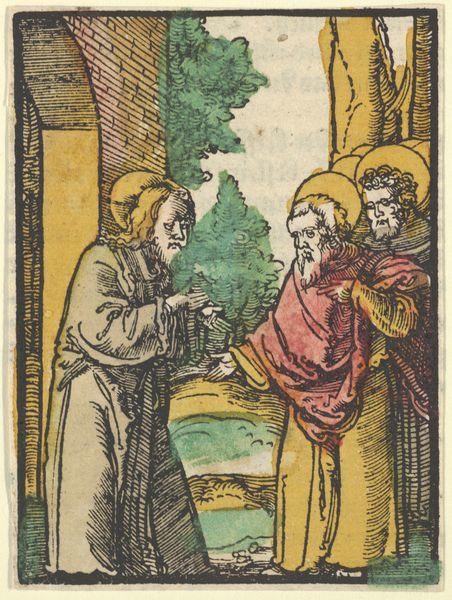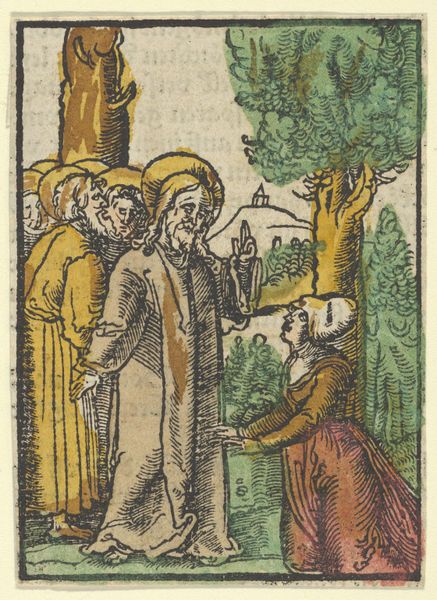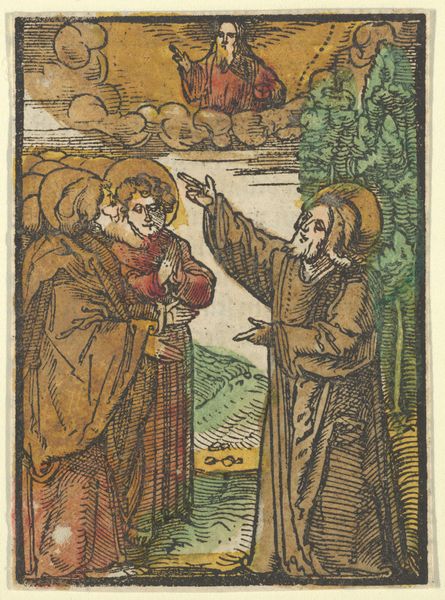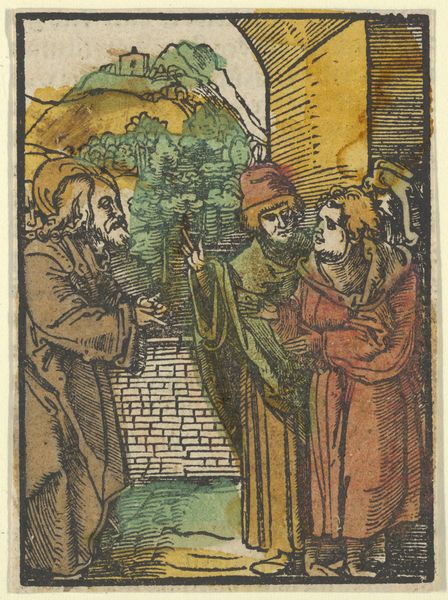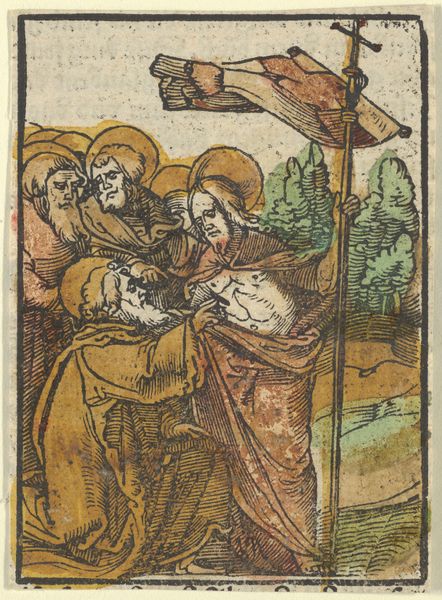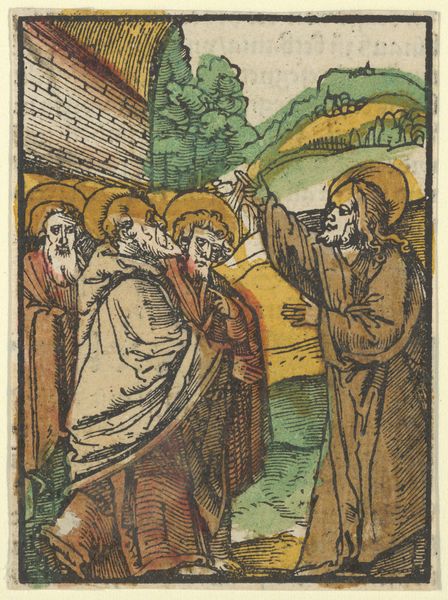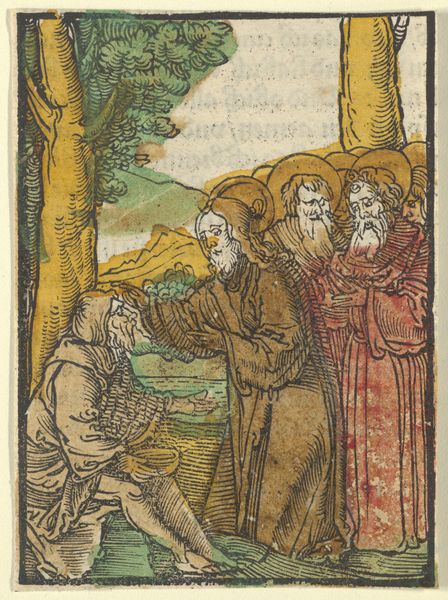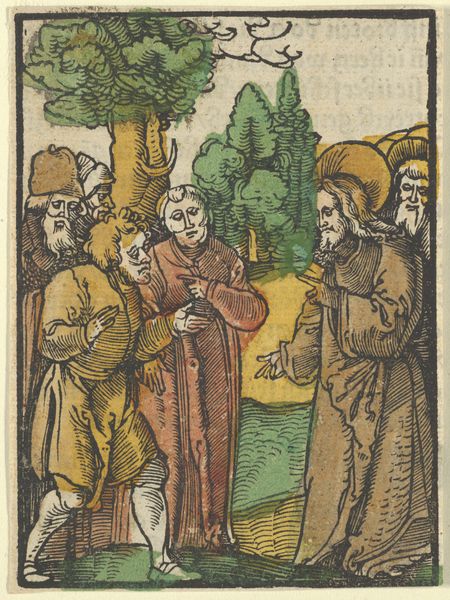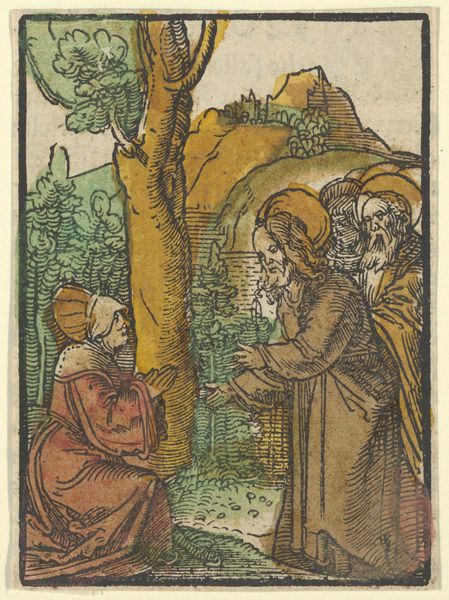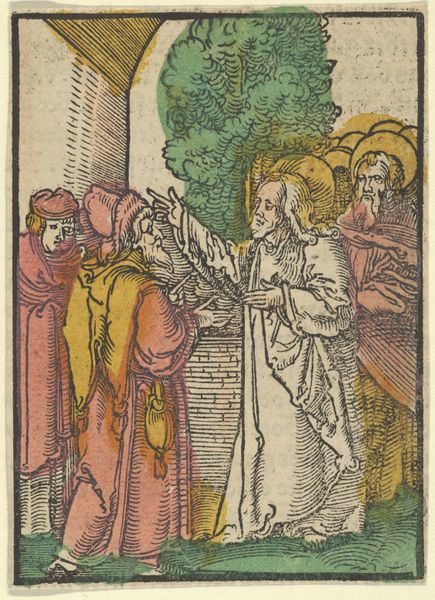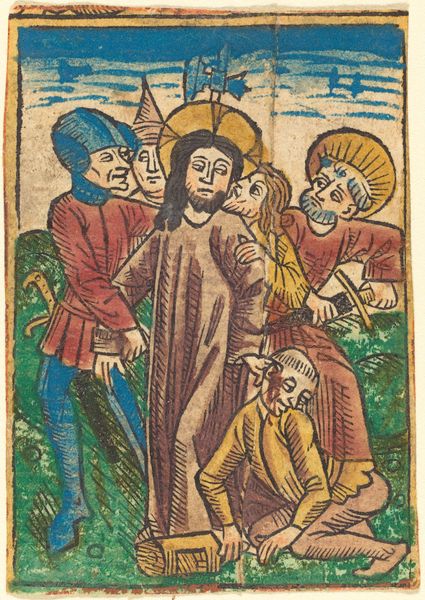
Christ Talking to the Disciples, 5, from Das Plenarium 1517
0:00
0:00
drawing, print, ink, woodcut
#
drawing
# print
#
figuration
#
ink
#
woodcut
#
northern-renaissance
Dimensions: Sheet: 3 11/16 × 2 11/16 in. (9.4 × 6.8 cm)
Copyright: Public Domain
Editor: This is "Christ Talking to the Disciples, 5" by Hans Schäufelein, from 1517. It's an ink woodcut. I’m immediately struck by how intimate it feels despite the important subject matter. What stands out to you, looking at it from your perspective? Curator: Well, considering Schäufelein's work in the context of the Northern Renaissance and the Reformation, I think the image carries a strong political message. The "Plenarium" was meant for popular consumption. To that end, does this representation challenge or reinforce established power structures within the church? Editor: That's a good question! I hadn't thought about it like that. It feels quite simple in its depiction. Does its accessibility speak to a shift in how religious narratives were being disseminated and understood at the time? Curator: Precisely. The woodcut medium itself speaks to this. Woodcuts allowed for mass production and wider accessibility to religious imagery and narratives, especially when compared to illuminated manuscripts which had previously held power over information dissemination, primarily available to wealthier clergy or nobility. Is there a way the art style reflects popular aesthetics? Editor: The figures, while Biblical, don't have that distant, idealized feel of earlier religious art. They look… more human. Would you say this "humanization" served a purpose in shaping public perception and reinforcing reformist ideas? Curator: Absolutely. Showing a more relatable, less imposing Christ allowed the public to feel a direct connection, bypassing the need for priestly interpretation. The power dynamic shifts away from the church and toward the individual. Now, what does the setting contribute, as an everyday space? Editor: Good point. I hadn’t thought about it. So in essence, the choice of medium, the style, even the setting, all become political statements in themselves, influencing how the public engages with faith. It’s not just about religious devotion but about empowerment. Curator: Exactly. Seeing the work within its socio-political moment highlights the powerful role art played in shaping beliefs and social change. Editor: I see the Reformation through new eyes now, understanding its revolutionary cultural and political consequences as conveyed by something seemingly simple like a print.
Comments
No comments
Be the first to comment and join the conversation on the ultimate creative platform.
